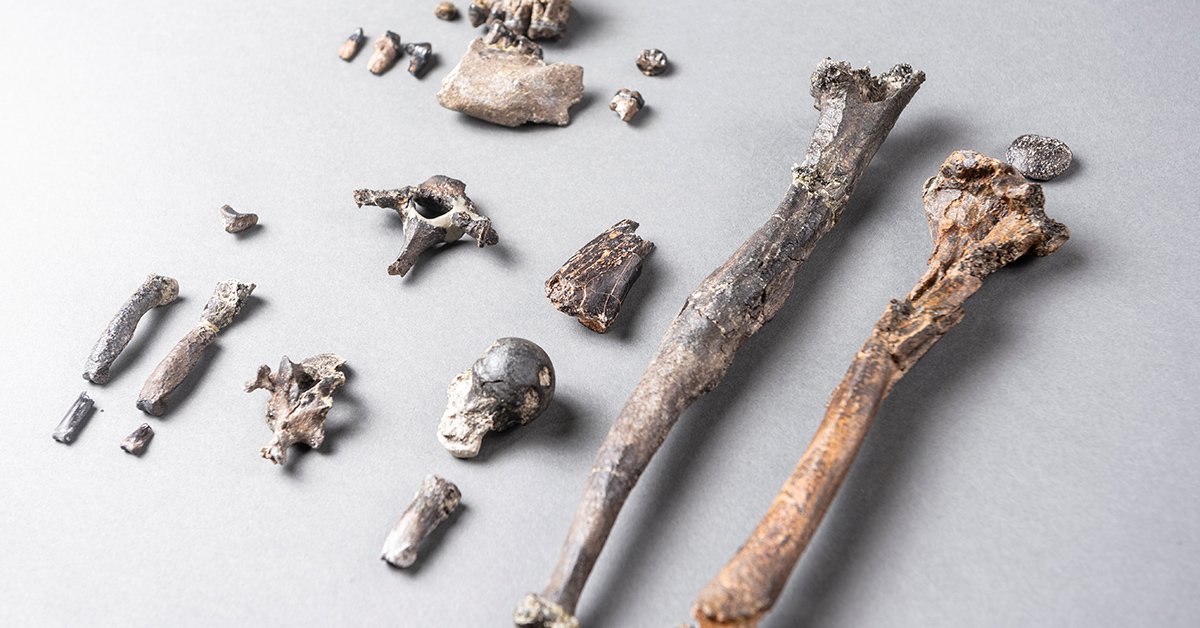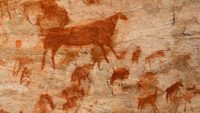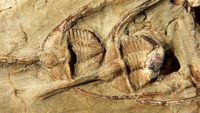Let’s explore the answer to a common skeptical question about ‘new information’ in genetics. …read more Source: creation.com
By Ken Ham From reading Genesis, and armed with a basic knowledge of genetics, we can learn a lot about what Adam was probably like. …read more Source: AIG Daily
Our incredible facial expressivity-able to represent 21 distinct emotions-would appear to be overdesigned. …read more Source: creation.com
Latest antimatter research undermines big bang theory …read more Source: creation.com
Have evolutionists changed the genetic code to make protein evolution faster? The evidence shows that they are far from it. …read more Source: creation.com
Evolutionary scientists continually search for evidence to support their claims of an evolutionary relationship between birds and dinosaurs. Their most recent attempt involves a new bird fossil named Fukuipteryx prima, found in Japan.1 Publishing in Communications Biology, Takuya Imai and his team, from Fukui Prefectural University, described the new bird species they extracted in 2013 from Lowe… More… …read more Source: icr.org
By Ken Ham The more scientists study the human body, the more obvious it is that we’re “fearfully and wonderfully made” (Psalm 139:14). Our bodies bear the hallmarks of design and the fingerprints of God. And a new study is highlighting that truth by demonstrating, once again, how incredibly designed our brains and systems are. According to a new study, some women who are missing (or, at the very least, have significantly reduced) olfactory bulbs in their brains are still able to smell. It is a surprising result because the olfactory bulbs are the part of the brain known to [More]
By Thomas Perry Source: The Milky Way Over Yellowstone is Outrageously Beautiful For more content like this visit REALfarmacy.com. These photographs of Yellowstone National Park by Dave Lane are so gorgeous it’s difficult to believe they’re from real life. Lane photographed the Abyss Pool in Yellowstone National Park just after a storm had passed the area — you can catch the hint of a flash of lightning between the trees in the center light. […] Source: The Milky Way Over Yellowstone is Outrageously Beautiful Learn more at REALfarmacy.com. …read more Source: realfarmacy.com
Solar cell modelled on butterfly wing absorbs twice as much sunlight …read more Source: creation.com
Eggshell nanostructure shows purposeful construction …read more Source: creation.com
By Ken Ham They’ve found a missing link! . . . at least that’s what the headlines (once again) will tell you! A recent study trumpeted the discovery of a supposedly 11.6-million-year-old ape from what is now Germany. Danuvius guggenmosi allegedly had “long arms suited to hanging in trees, [and] features of its legs and spine suggest it might also have been able to move around on its hind feet.” It’s now being hailed as the earliest evidence of bipedalism (habitual walking on two legs) and now upends the evolutionary timetable for bipedal evolution. So, did they find …read more [More]
By Dr. Andrew A. Snelling The evidence for grossly accelerated radioisotope decay during a past cataclysmic event such as the Genesis Flood has been well established. …read more Source: AIG Daily
Big bang theory only appears to be scientific because people are exposed only to the evidence that appears to support it. …read more Source: creation.com
In their quest to try and find some sort of evolutionary similarity between humans and apes, scientists have compared DNA, proteins, anatomy, behavior, and every other conceivable feature. But many of these attempts showed that a huge chasm of dissimilarity exists with no distinct evolutionary connection. And now, a new study comparing saliva between humans and apes is once again showing the uniqueness of humans and the failure of evolution… More… …read more Source: icr.org
By John UpChurch Perhaps, in fact, it’s our discomfort with not knowing what to do with cavemen that makes us laugh. So just who were they? …read more Source: AIG Daily
By Harry F. Sanders, III Plants communicate in many ways. This article discusses some of the documented “under-the-table” communications. …read more Source: AIG Daily
By Ken Ham Scientists studying fossil deposits in Morocco recently announced a stunning new find—a series of trilobites (sea creatures, also called ancient cockroaches, now believed to be extinct), fossilized in a single-file line. It looks as if the trilobites were playing, “follow the leader.” That’s the observational evidence. But how to understand these fossils is a matter of interpretation. After all, the fossils don’t come with a tag on them telling you what happened and when. And your interpretation depends on your starting point. The scientists studying these fossils approached the evidence from a naturalistic and evolutionary perspective. Since [More]
Ancient wine vessel depicts sauropod dinosaur …read more Source: creation.com
How could dinosaur proteins persist over 70 million years inside dinosaur bones? That’s one of the biggest questions that secular paleontologists have faced in the last two decades. Many of them reason that some unique but undiscovered set of conditions grant proteins power to defy all odds and somehow survive unimaginable time scales. They think someone, someday, will discover the protein’s secret to survival. A new model sugge… More… …read more Source: icr.org
Do all scientists believe in an old earth? The fatal flaws of radioactive and tree-ring dating and the flat earth myth. …read more Source: creation.com
Creationists should now avoid using this argument. …read more Source: creation.com
How did Phobos and Deimos come to be so close to the red planet? …read more Source: creation.com
Scant bone fragments from a cave on Luzon island suggest yet another fossil human, not an evolutionary intermediate. …read more Source: creation.com
By Ken Ham Which evolved first—moth ears or bat echolocation? Well, the “textbook” evolutionary story is that bats evolved the ability to make ultrasonic calls, which they used to hunt for moths. And then moths supposedly evolved (several times, apparently) the ability to hear these calls and better evade the hunting mammals. Now, that story has been taught as fact for years. But apparently, a new study says this whole story is backwards! Based on this new study (it assumed evolutionary ideas and relationships in the first place), which was described as a “bit of a bombshell,” evolutionary scientists claim [More]
Genetic engineering is no longer in the realm of science fiction. We review a Netflix series called Unnatural Selection and discuss the implications of the CRISPR-Cas9 technology. …read more Source: creation.com
By Dr. Jason Lisle Physics dealing with how the universe operates at very small scales—interactions involving particles smaller than atoms—is called quantum mechanics. …read more Source: AIG Daily
For more than a century, biologists have appealed to Darwinian natural selection to explain how living organisms adapt to different environments. But research over the last several decades has consistently dethroned Darwin’s view of natural selection. Rather than corroborating the concept that environments mold creatures through “survival of the fittest,” the research supports the astonishing idea that to a great extent creature… More… …read more Source: icr.org












































